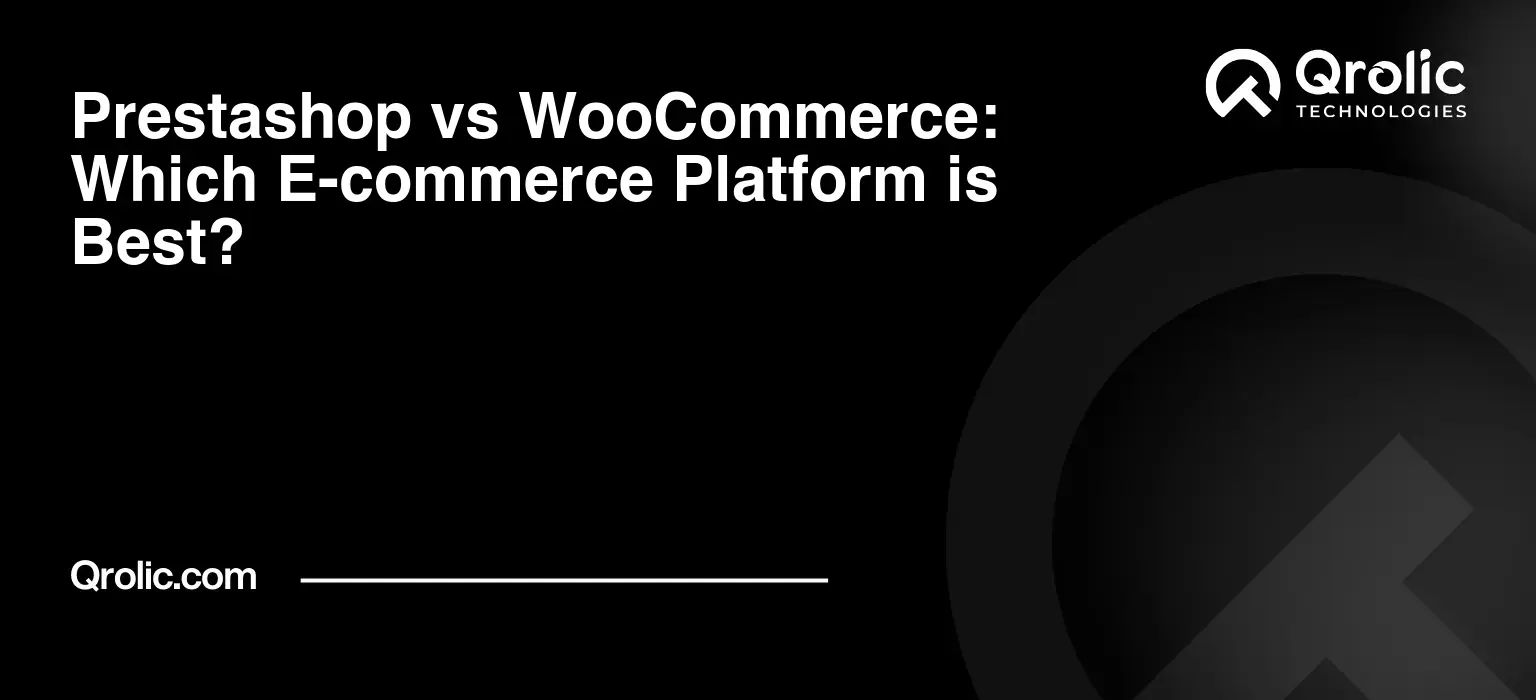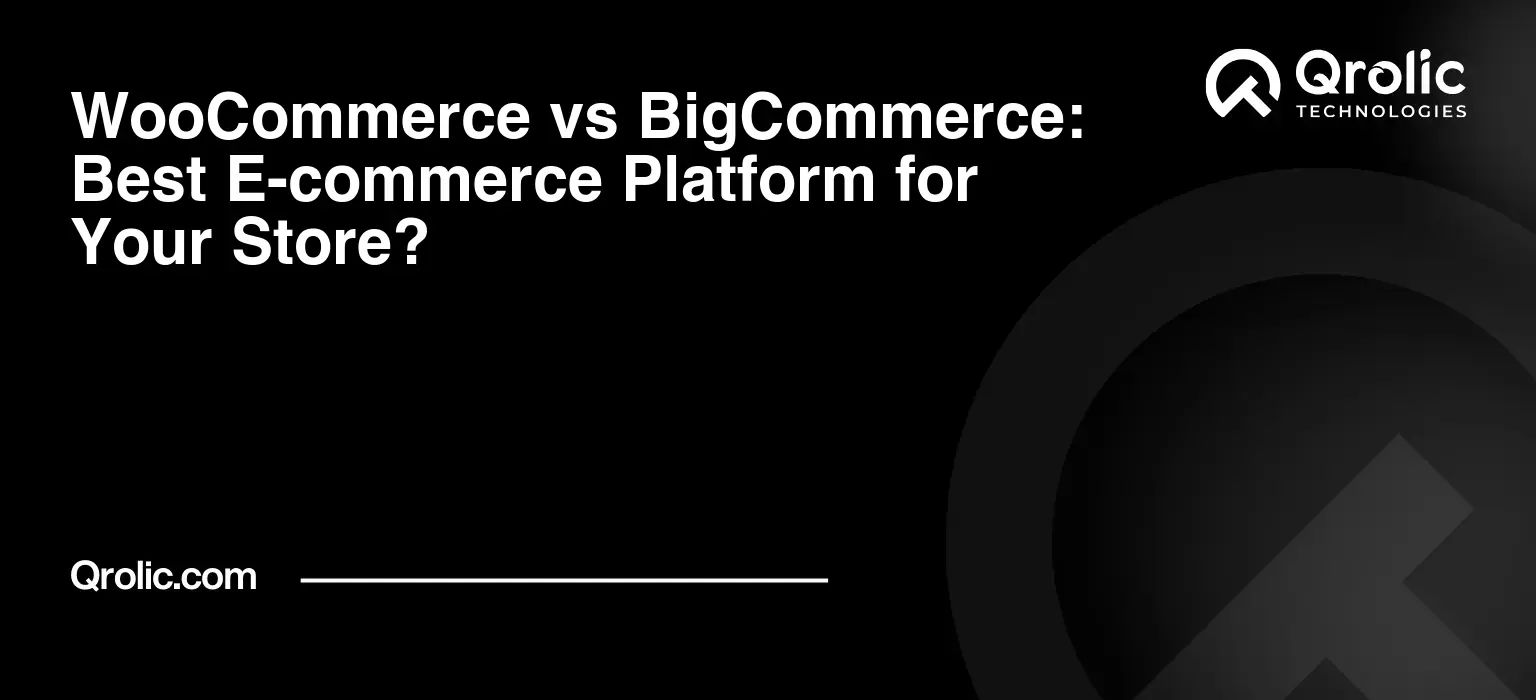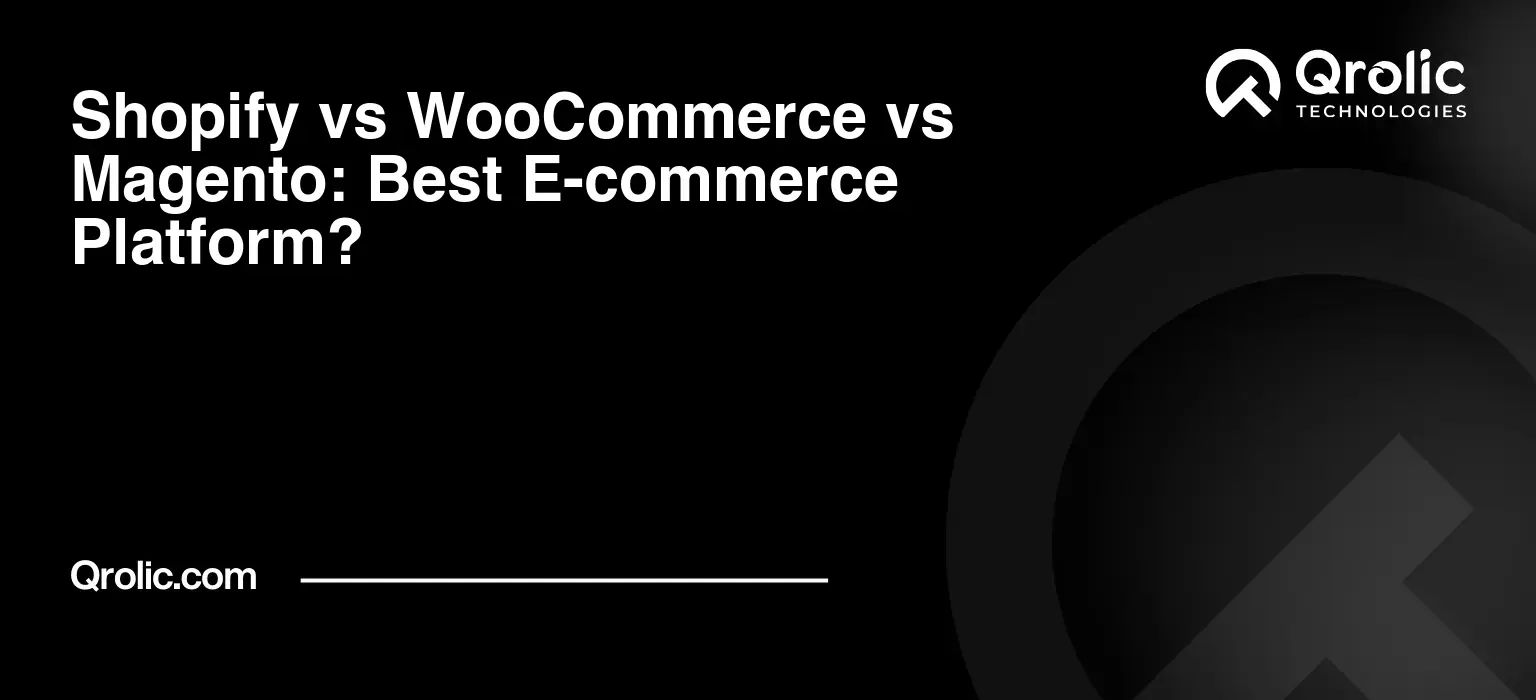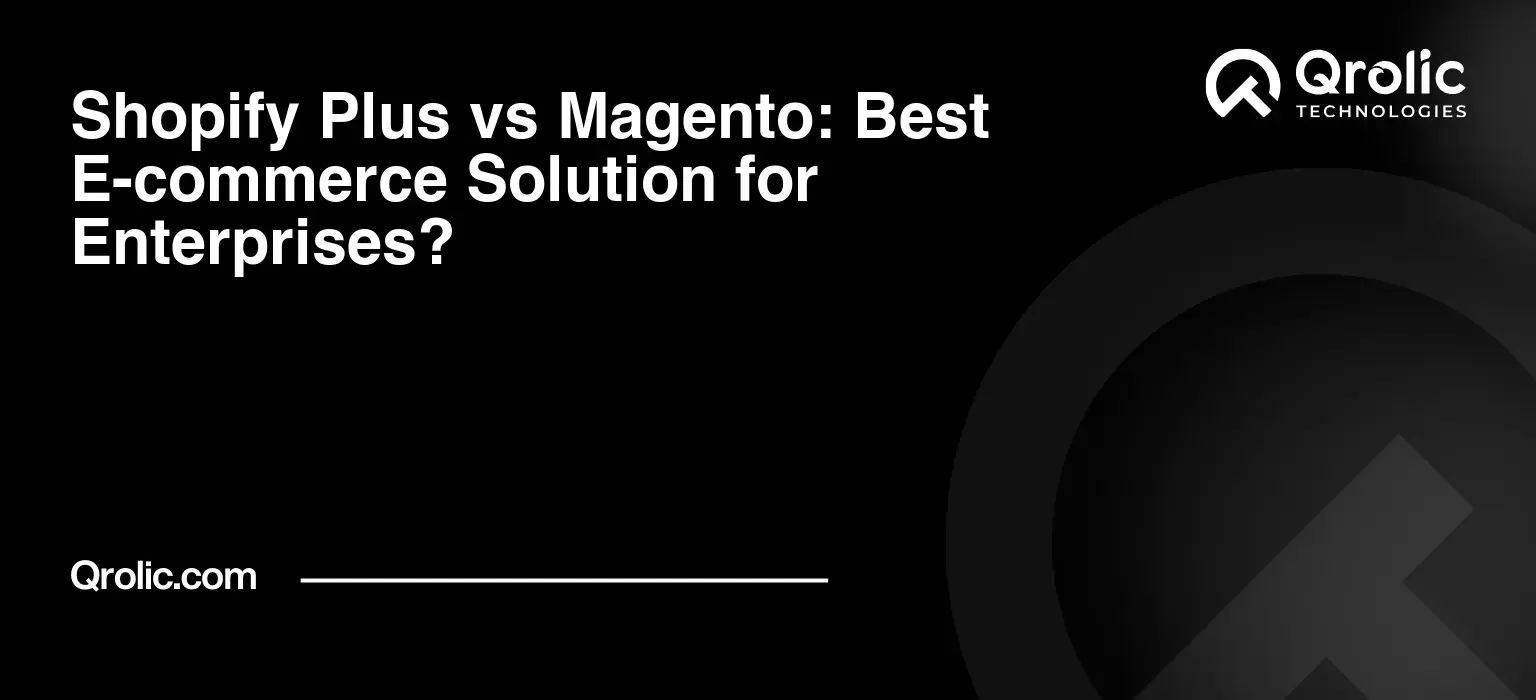Choosing the right e-commerce platform is like picking the perfect foundation for your dream house. Get it right, and you’re set for growth and success. Get it wrong, and you’ll be facing endless headaches and costly repairs. Two titans dominate the e-commerce landscape: PrestaShop and WooCommerce. Both promise to help you build a thriving online store, but which one is truly the best online store solution for you? This comprehensive guide dives deep into the heart of both platforms, leaving no stone unturned, so you can make an informed decision and avoid future regrets.
Quick Summary:
- PrestaShop: dedicated e-commerce, robust features, more technical.
- WooCommerce: WordPress plugin, user-friendly, great for content.
- Choose based on your tech skills, budget, and WordPress comfort.
- Both platforms require investment for full functionality.
Table of Contents
- 1. Understanding the Core: What are PrestaShop and WooCommerce?
- 1.1 PrestaShop: The Dedicated E-commerce Powerhouse
- 1.2 WooCommerce: The WordPress E-commerce Plugin
- 2. Setting Up Shop: Ease of Installation and Configuration
- 2.1 PrestaShop: A More Technical Start
- 2.2 WooCommerce: The User-Friendly Approach
- 3. Cost Analysis: Breaking Down the Expenses
- 3.1 PrestaShop: The Cost of Freedom
- 3.2 WooCommerce: The Plugin with Potential Expenses
- 4. Ease of Use: Navigating the User Interface
- 4.1 PrestaShop: A Powerful, But Complex Interface
- 4.2 WooCommerce: The Familiar WordPress Dashboard
- 5. Features and Functionality: What Can You Do?
- 5.1 PrestaShop: A Feature-Rich E-commerce Solution
- 5.2 WooCommerce: Extending WordPress with E-commerce
- 6. Customization and Flexibility: Tailoring Your Store
- 6.1 PrestaShop: Deep Customization with a Learning Curve
- 6.2 WooCommerce: Leveraging the Power of WordPress
- 7. SEO (Search Engine Optimization): Getting Found Online
- 7.1 PrestaShop: Built-in SEO Features
- 7.2 WooCommerce: Relying on WordPress SEO Plugins
- 8. Scalability: Growing Your Business
- 8.1 PrestaShop: Designed for Scalability
- 8.2 WooCommerce: Scalability with the Right Setup
- 9. Support and Community: Getting Help When You Need It
- 9.1 PrestaShop: A Strong and Active Community
- 9.2 WooCommerce: Leveraging the WordPress Community
- 10. Security: Protecting Your Store and Customers
- 10.1 PrestaShop: Security Best Practices
- 10.2 WooCommerce: WordPress Security Considerations
- 11. PrestaShop vs. WooCommerce: Key Differences Summarized
- 12. Who Should Choose PrestaShop?
- 13. Who Should Choose WooCommerce?
- 14. Real-World Examples: PrestaShop and WooCommerce in Action
- 15. The Future of E-commerce: Trends to Watch
- 16. Qrolic Technologies: Your Partner in E-commerce Success
- 17. Conclusion: Making the Right Choice for Your Business
1. Understanding the Core: What are PrestaShop and WooCommerce?
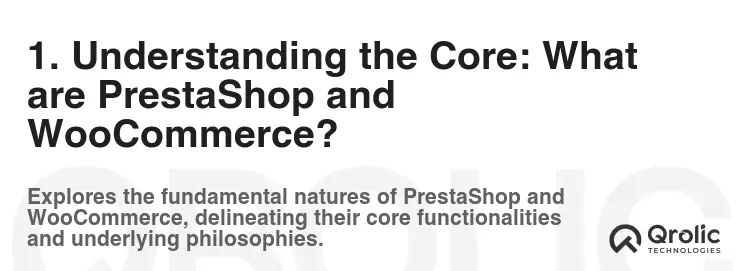
Before we jump into a head-to-head comparison, let’s establish a solid understanding of what each platform actually is.
1.1 PrestaShop: The Dedicated E-commerce Powerhouse
PrestaShop is a dedicated, open-source e-commerce platform. Think of it as a complete, purpose-built online store solution, ready to go almost right out of the box. It’s designed exclusively for e-commerce, offering a robust set of features focused on selling products online.
Key characteristics of PrestaShop:
- Open-Source: Free to download and use, allowing for extensive customization.
- Self-Hosted: You’re responsible for finding and managing your own web hosting.
- Dedicated E-commerce Platform: Built solely for creating and managing online stores.
- Module-Based Architecture: Functionality is extended through modules (both free and paid).
- Strong Community: A large and active community provides support and resources.
1.2 WooCommerce: The WordPress E-commerce Plugin
WooCommerce, on the other hand, is an e-commerce plugin for WordPress. It transforms your existing WordPress website into a fully functional online store. This makes it a popular choice for those already familiar with the WordPress ecosystem.
Key characteristics of WooCommerce:
- WordPress Plugin: Requires WordPress to function.
- Open-Source: Free to download and use.
- Self-Hosted: Requires you to find and manage your own web hosting.
- Extensive Customization: Leverages the power and flexibility of the WordPress platform.
- Vast Ecosystem: Benefits from the massive WordPress ecosystem of themes and plugins.
In a nutshell: PrestaShop is a standalone e-commerce application, while WooCommerce is an add-on that enhances WordPress with e-commerce capabilities.
2. Setting Up Shop: Ease of Installation and Configuration
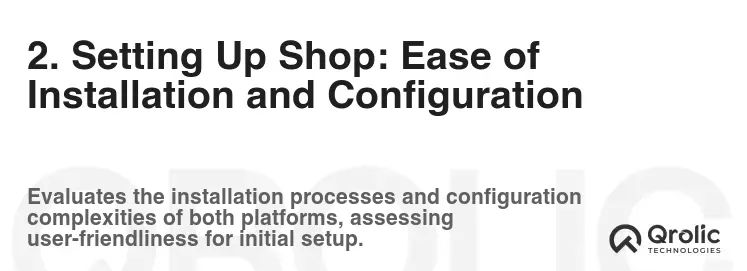
The initial setup process can significantly impact your experience with any platform. Let’s compare the setup processes for PrestaShop and WooCommerce.
2.1 PrestaShop: A More Technical Start
Installing PrestaShop is generally considered more technically demanding than setting up WooCommerce.
Steps involved in PrestaShop installation:
- Choose a Web Host: Select a web hosting provider that meets PrestaShop’s minimum requirements (PHP version, MySQL database, etc.).
- Download PrestaShop: Download the latest version of PrestaShop from the official website.
- Upload Files: Upload the PrestaShop files to your web hosting server using FTP (File Transfer Protocol) or a file manager.
- Create a Database: Create a new MySQL database on your web hosting server.
- Run the Installation Wizard: Access the PrestaShop installation script through your web browser and follow the on-screen instructions.
- Configure Store Settings: Configure basic store settings, such as currency, language, and store name.
Why it can be challenging:
- Technical Knowledge Required: Familiarity with FTP, databases, and web server configurations is often necessary.
- Potential Compatibility Issues: Ensuring that your hosting environment meets PrestaShop’s requirements can be tricky.
- More Manual Configuration: Requires more manual configuration steps compared to WooCommerce.
2.2 WooCommerce: The User-Friendly Approach
WooCommerce boasts a much simpler installation process, especially if you already have a WordPress website.
Steps involved in WooCommerce installation:
- Install WordPress (If You Haven’t Already): If you don’t have a WordPress website, install it on your web hosting server. Many web hosting providers offer one-click WordPress installation.
- Install the WooCommerce Plugin: Log in to your WordPress admin panel and navigate to Plugins > Add New. Search for “WooCommerce” and click “Install Now.”
- Activate the Plugin: After installation, click “Activate” to activate the WooCommerce plugin.
- Run the Setup Wizard: Follow the on-screen instructions in the WooCommerce Setup Wizard to configure basic store settings, such as currency, shipping, and payment gateways.
Why it’s easier:
- Seamless WordPress Integration: Integrates seamlessly with the WordPress platform.
- Simplified Installation: The installation process is streamlined and user-friendly.
- Automated Configuration: The Setup Wizard guides you through the initial configuration.
- One-Click Installation Options: Many web hosting providers offer one-click WordPress and WooCommerce installation.
Verdict: WooCommerce wins in terms of ease of installation and configuration, especially for those already familiar with WordPress. PrestaShop requires more technical expertise and manual configuration.
3. Cost Analysis: Breaking Down the Expenses

Running an online store involves various costs. Let’s compare the costs associated with PrestaShop and WooCommerce.
3.1 PrestaShop: The Cost of Freedom
PrestaShop itself is free to download and use. However, you’ll need to factor in the following costs:
- Web Hosting: Essential for hosting your PrestaShop store. Prices vary depending on the hosting provider and plan (typically $5-$100+ per month).
- Domain Name: Required for your online store’s address (typically $10-$20 per year).
- Themes: While free themes are available, premium themes offer better design and functionality (typically $50-$200+).
- Modules: Many essential features require paid modules, such as advanced marketing tools, shipping integrations, and payment gateways (prices vary greatly, from $20 to $500+ per module).
- SSL Certificate: Essential for secure transactions (typically $50-$200 per year).
- Development/Maintenance Costs (Optional): If you need help with customization, bug fixes, or updates, you may need to hire a developer.
Hidden Costs:
- Time Investment: Learning PrestaShop and managing your store can be time-consuming.
- Troubleshooting: Resolving technical issues may require hiring a developer.
- Security: Maintaining the security of your store requires vigilance and potentially additional security modules.
3.2 WooCommerce: The Plugin with Potential Expenses
WooCommerce, like PrestaShop, is a free plugin. However, you’ll also encounter costs:
- Web Hosting: Essential for hosting your WordPress website and WooCommerce Store (typically $5-$100+ per month).
- Domain Name: Required for your online store’s address (typically $10-$20 per year).
- WordPress Theme: While free themes are available, premium themes offer better design and functionality (typically $30-$100+).
- WooCommerce Extensions: Many essential features require paid extensions, such as advanced marketing tools, shipping integrations, and payment gateways (prices vary greatly, from $20 to $300+ per extension).
- SSL Certificate: Essential for secure transactions (typically $50-$200 per year).
- Development/Maintenance Costs (Optional): If you need help with customization, bug fixes, or updates, you may need to hire a developer.
Hidden Costs:
- WordPress Theme Compatibility: Ensuring your chosen theme is fully compatible with WooCommerce is crucial.
- Plugin Conflicts: Conflicts between different WordPress Plugins can cause issues.
- WordPress Core Updates: Keeping WordPress core, themes, and plugins up-to-date is essential for security and functionality.
Verdict: Both PrestaShop and WooCommerce can be cost-effective, but the final cost depends heavily on your specific needs and the extensions/modules/themes you choose. Be prepared to invest in paid extensions/modules for advanced functionality in both platforms.
4. Ease of Use: Navigating the User Interface
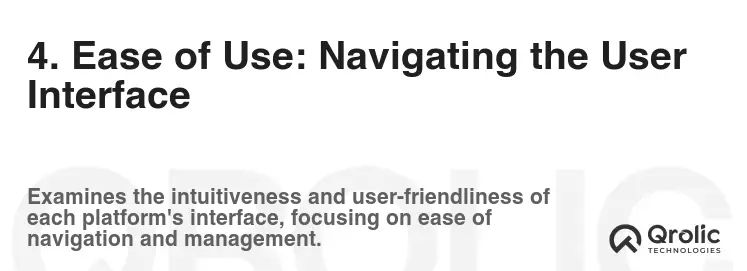
The user interface (UI) and user experience (UX) significantly impact how easily you can manage your online store.
4.1 PrestaShop: A Powerful, But Complex Interface
PrestaShop’s backend interface is robust and feature-rich. However, it can also feel overwhelming, especially for beginners.
Pros:
- Comprehensive Features: Offers a wide range of built-in features for managing products, orders, customers, and marketing.
- Detailed Reporting: Provides detailed reports and analytics to track your store’s performance.
- Advanced Configuration Options: Offers a high level of customization and control over your store’s settings.
Cons:
- Steep Learning Curve: The interface can be complex and challenging to learn, especially for beginners.
- Less Intuitive Navigation: Navigating the backend can sometimes feel clunky and unintuitive.
- Requires More Technical Knowledge: Understanding the various settings and options often requires more technical knowledge.
4.2 WooCommerce: The Familiar WordPress Dashboard
WooCommerce benefits from the familiar WordPress dashboard, making it easier to learn and use, especially for those already familiar with WordPress.
Pros:
- Intuitive Interface: Leverages the user-friendly WordPress dashboard.
- Easy to Learn: Easier to learn and use compared to PrestaShop, especially for WordPress users.
- Streamlined Workflow: Provides a streamlined workflow for managing products, orders, and customers.
Cons:
- Relies on WordPress Ecosystem: Heavily reliant on the WordPress ecosystem, which can lead to plugin conflicts and compatibility issues.
- Core Functionality Limited: Core functionality is more limited compared to PrestaShop, requiring more extensions.
- Potential for Bloat: Installing too many plugins can slow down your website.
Verdict: WooCommerce wins in terms of ease of use, thanks to its familiar WordPress interface. PrestaShop offers more comprehensive features out of the box but has a steeper learning curve.
5. Features and Functionality: What Can You Do?
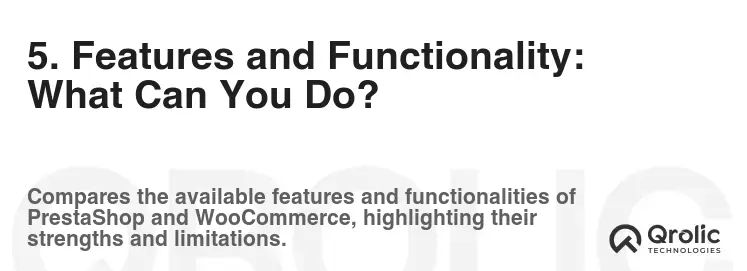
The features and functionality offered by each platform determine what you can achieve with your online store.
5.1 PrestaShop: A Feature-Rich E-commerce Solution
PrestaShop comes packed with features designed specifically for e-commerce.
Key features:
- Product Management: Advanced product management features, including product variations, attributes, and combinations.
- Order Management: Comprehensive order management system, including order tracking, status updates, and invoice generation.
- Customer Management: Customer accounts, order history, and customer segmentation.
- Marketing Tools: Built-in marketing tools, such as discounts, coupons, and email marketing integrations.
- SEO Optimization: SEO-friendly features, such as customizable URLs, meta descriptions, and sitemap generation.
- Multi-Store Management: Ability to manage multiple stores from a single installation (requires a module).
- Internationalization: Supports multiple languages and currencies.
- Payment Gateways: Integrates with various payment gateways, such as PayPal, Stripe, and Amazon Pay.
- Shipping Options: Supports various shipping methods and carriers.
5.2 WooCommerce: Extending WordPress with E-commerce
WooCommerce extends WordPress with essential e-commerce features.
Key features:
- Product Management: Basic product management features, including product variations and attributes.
- Order Management: Order management system, including order tracking and status updates.
- Customer Management: Customer accounts and order history.
- Marketing Tools: Requires extensions for advanced marketing features.
- SEO Optimization: Leverages WordPress SEO plugins for SEO optimization.
- Payment Gateways: Integrates with various payment gateways, such as PayPal, Stripe, and Amazon Pay.
- Shipping Options: Supports various shipping methods and carriers through extensions.
Areas where PrestaShop excels:
- Built-in Features: Offers more built-in e-commerce features compared to WooCommerce.
- Advanced Product Management: More advanced product management capabilities.
- Multi-Store Management: Native support for multi-store management.
Areas where WooCommerce excels:
- Content Marketing: Seamless integration with WordPress for content marketing.
- Flexibility: Highly flexible and customizable thanks to the WordPress ecosystem.
- Plugin Ecosystem: Access to a vast library of WordPress plugins for extending functionality.
Verdict: PrestaShop offers more comprehensive e-commerce features out of the box, while WooCommerce relies on extensions to expand its functionality.
6. Customization and Flexibility: Tailoring Your Store
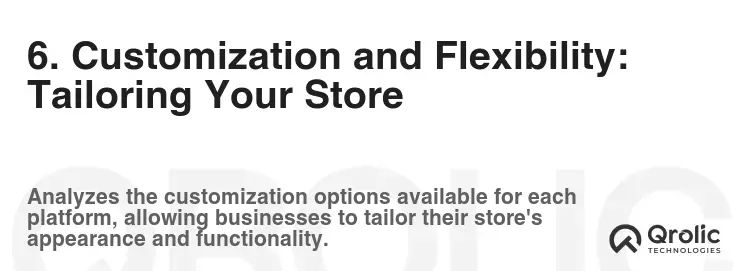
The ability to customize and tailor your online store is crucial for creating a unique brand experience.
6.1 PrestaShop: Deep Customization with a Learning Curve
PrestaShop allows for extensive customization through themes, modules, and code modifications. However, this requires a deeper understanding of the platform.
Customization options:
- Themes: Customize the look and feel of your store with pre-designed themes or create your own custom theme.
- Modules: Extend the functionality of your store with modules.
- Code Modifications: Modify the core code of PrestaShop to achieve advanced customization.
- Template Engine: Uses the Smarty template engine for customizing the front-end.
Challenges:
- Steep Learning Curve: Requires a good understanding of PrestaShop’s architecture and code.
- Theme Compatibility: Ensuring theme compatibility with modules and updates can be challenging.
- Code Conflicts: Modifying the core code can lead to conflicts and instability.
6.2 WooCommerce: Leveraging the Power of WordPress
WooCommerce leverages the power and flexibility of the WordPress platform, offering a wide range of customization options.
Customization options:
- WordPress Themes: Choose from thousands of WordPress themes to customize the look and feel of your store.
- WooCommerce Extensions: Extend the functionality of your store with WooCommerce extensions.
- WordPress Plugins: Enhance your store with WordPress plugins for various purposes, such as SEO, marketing, and security.
- Code Modifications: Modify the code of WooCommerce and WordPress to achieve advanced customization.
- Template Overrides: Override WooCommerce templates to customize the front-end.
Advantages:
- Vast Ecosystem: Access to the massive WordPress ecosystem of themes and plugins.
- Flexibility: Highly flexible and customizable.
- Easy to Extend: Easy to extend the functionality of your store with plugins.
Verdict: WooCommerce offers greater flexibility and customization options due to the vast WordPress ecosystem. PrestaShop allows for deep customization but requires more technical expertise.
7. SEO (Search Engine Optimization): Getting Found Online
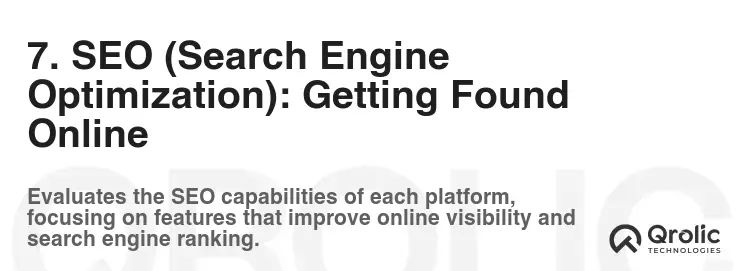
SEO is crucial for attracting organic traffic to your online store.
7.1 PrestaShop: Built-in SEO Features
PrestaShop offers a good set of built-in SEO features.
SEO Features:
- Customizable URLs: Ability to create SEO-friendly URLs.
- Meta Descriptions: Ability to add meta descriptions to products and categories.
- Sitemap Generation: Automatic sitemap generation for search engine indexing.
- Image Optimization: Options for optimizing product images for search engines.
- Schema Markup: Support for schema markup to enhance search engine results.
SEO Strategies for PrestaShop:
- Keyword Research: Identify relevant keywords for your products and target audience.
- On-Page Optimization: Optimize your product pages with relevant keywords, meta descriptions, and engaging content.
- Content Marketing: Create informative and engaging content to attract and retain customers.
- Link Building: Build high-quality backlinks to your website to improve your search engine rankings.
- Technical SEO: Ensure your website is technically sound and mobile-friendly.
7.2 WooCommerce: Relying on WordPress SEO Plugins
WooCommerce relies on WordPress SEO plugins for SEO optimization.
SEO Plugins:
- Yoast SEO: Popular SEO plugin with features for keyword optimization, meta description management, and sitemap generation.
- Rank Math: Another popular SEO plugin with advanced features for keyword tracking, content analysis, and schema markup.
- All in One SEO Pack: A comprehensive SEO plugin with a wide range of features for optimizing your website for search engines.
SEO Strategies for WooCommerce:
- Keyword Research: Identify relevant keywords for your products and target audience.
- On-Page Optimization: Optimize your product pages with relevant keywords, meta descriptions, and engaging content.
- Content Marketing: Create informative and engaging content to attract and retain customers.
- Link Building: Build high-quality backlinks to your website to improve your search engine rankings.
- Technical SEO: Ensure your website is technically sound and mobile-friendly.
Verdict: Both PrestaShop and WooCommerce can be effectively optimized for SEO. WooCommerce benefits from the powerful WordPress SEO plugins, while PrestaShop offers a good set of built-in SEO features.
8. Scalability: Growing Your Business
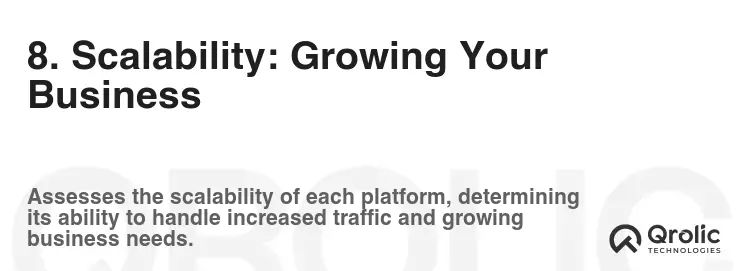
Scalability refers to the ability of your platform to handle increased traffic and sales as your business grows.
8.1 PrestaShop: Designed for Scalability
PrestaShop is designed for scalability and can handle a large number of products and customers.
Scalability Considerations:
- Hosting Infrastructure: Choose a web hosting provider that can handle increased traffic and resource demands.
- Caching: Implement caching mechanisms to improve website performance.
- Database Optimization: Optimize your database to ensure efficient data retrieval.
- Code Optimization: Optimize your code to reduce resource consumption.
- Content Delivery Network (CDN): Use a CDN to deliver static content from servers located closer to your users.
8.2 WooCommerce: Scalability with the Right Setup
WooCommerce can be scalable, but it requires careful planning and optimization.
Scalability Considerations:
- Hosting Infrastructure: Choose a web hosting provider that can handle increased traffic and resource demands.
- Caching: Implement caching mechanisms to improve website performance.
- Database Optimization: Optimize your database to ensure efficient data retrieval.
- Code Optimization: Optimize your code to reduce resource consumption.
- Content Delivery Network (CDN): Use a CDN to deliver static content from servers located closer to your users.
- Plugin Management: Avoid installing too many plugins, as they can slow down your website.
Verdict: PrestaShop is generally considered more scalable out of the box, while WooCommerce requires more careful planning and optimization to handle large traffic volumes.
9. Support and Community: Getting Help When You Need It

Having access to support and a vibrant community is essential for resolving issues and getting help when you need it.
9.1 PrestaShop: A Strong and Active Community
PrestaShop has a large and active community of users and developers.
Support Options:
- Official Documentation: Comprehensive documentation available on the PrestaShop website.
- Community Forums: Active community forums where you can ask questions and get help from other users.
- Third-Party Support: Access to paid support from PrestaShop partners and developers.
9.2 WooCommerce: Leveraging the WordPress Community
WooCommerce benefits from the massive WordPress community.
Support Options:
- Official Documentation: Comprehensive documentation available on the WooCommerce website.
- WordPress Forums: Access to the vast WordPress forums for general support and troubleshooting.
- WooCommerce Support: Direct support from WooCommerce developers for paid extensions.
- Third-Party Support: Access to paid support from WordPress developers and agencies.
Verdict: Both PrestaShop and WooCommerce have strong communities and offer various support options. WooCommerce benefits from the even larger WordPress community.
10. Security: Protecting Your Store and Customers

Security is paramount for any online store.
10.1 PrestaShop: Security Best Practices
PrestaShop requires implementing security best practices to protect your store.
Security Measures:
- Keep Software Updated: Regularly update PrestaShop, themes, and modules to patch security vulnerabilities.
- Use Strong Passwords: Use strong and unique passwords for all accounts.
- Secure Hosting: Choose a web hosting provider with robust security measures.
- SSL Certificate: Install an SSL certificate to encrypt data transmission.
- Firewall: Implement a firewall to protect your website from malicious attacks.
- Regular Backups: Regularly back up your website data to prevent data loss.
- Security Modules: Consider using security modules to enhance your store’s security.
10.2 WooCommerce: WordPress Security Considerations
WooCommerce relies on WordPress security best practices to protect your store.
Security Measures:
- Keep Software Updated: Regularly update WordPress core, themes, and plugins to patch security vulnerabilities.
- Use Strong Passwords: Use strong and unique passwords for all accounts.
- Secure Hosting: Choose a web hosting provider with robust security measures.
- SSL Certificate: Install an SSL certificate to encrypt data transmission.
- Firewall: Implement a firewall to protect your website from malicious attacks.
- Regular Backups: Regularly back up your website data to prevent data loss.
- Security Plugins: Consider using security plugins to enhance your website’s security.
Verdict: Both PrestaShop and WooCommerce require implementing security best practices to protect your store. WooCommerce inherits the security vulnerabilities of the WordPress platform, making it crucial to keep WordPress core, themes, and plugins updated.
11. PrestaShop vs. WooCommerce: Key Differences Summarized
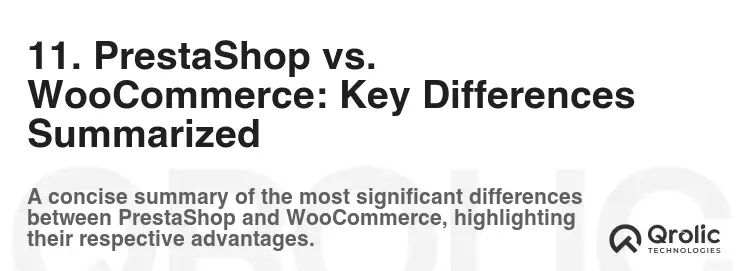
Here’s a quick overview of the key differences between PrestaShop and WooCommerce:
| Feature | PrestaShop | WooCommerce |
|---|---|---|
| Type | Dedicated e-commerce platform | WordPress plugin |
| Ease of Setup | More technical, requires more manual configuration | Easier, especially for WordPress users |
| Cost | Free, but requires paid modules for many features | Free, but requires paid extensions for many features |
| Ease of Use | Steeper learning curve, more complex interface | Easier to learn, familiar WordPress interface |
| Features | More comprehensive e-commerce features out of the box | Relies on extensions for many features |
| Customization | Deep customization, requires technical expertise | Greater flexibility, leverages WordPress ecosystem |
| SEO | Built-in SEO features | Relies on WordPress SEO plugins |
| Scalability | Designed for scalability | Scalable with proper planning and optimization |
| Support | Strong PrestaShop community | Benefits from the massive WordPress community |
| Security | Requires security best practices | Requires WordPress security best practices |
12. Who Should Choose PrestaShop?

PrestaShop is a good choice for:
- Businesses focused solely on e-commerce: If your primary focus is selling products online and you don’t need the content management features of WordPress.
- Those needing advanced e-commerce features out of the box: If you need advanced product management, multi-store management, and other e-commerce-specific features without relying on third-party extensions.
- Those willing to invest time in learning the platform: If you are willing to invest the time and effort required to learn the platform’s interface and configuration options.
- Businesses with technical expertise: If you have technical expertise or are willing to hire a developer to customize and maintain your store.
13. Who Should Choose WooCommerce?
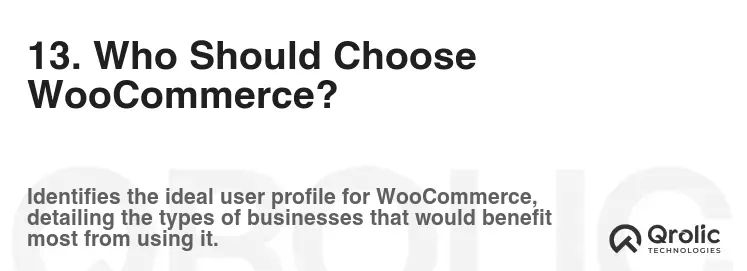
WooCommerce is a good choice for:
- Businesses already using WordPress: If you already have a WordPress website and want to add e-commerce functionality.
- Those needing content marketing capabilities: If you want to leverage WordPress’s content management capabilities for marketing your products.
- Those seeking flexibility and customization: If you need a highly customizable platform and want access to the vast WordPress ecosystem of themes and plugins.
- Beginners with limited technical skills: If you are a beginner with limited technical skills and want an easy-to-use platform.
- Businesses on a tight budget: The core WooCommerce plugin is free, and there are many free themes and plugins available.
14. Real-World Examples: PrestaShop and WooCommerce in Action
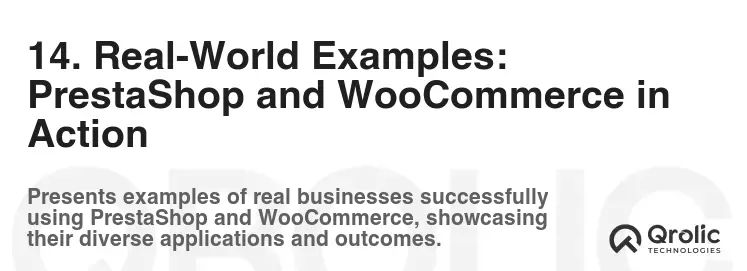
To further illustrate the strengths of each platform, let’s look at some real-world examples:
- PrestaShop: Often used by medium to large businesses with a dedicated e-commerce focus, such as clothing retailers, electronics stores, and specialized product vendors.
- WooCommerce: Popular among small businesses, startups, and bloggers who want to sell products alongside their content, such as handmade goods sellers, digital product creators, and subscription box services.
15. The Future of E-commerce: Trends to Watch

The e-commerce landscape is constantly evolving. Here are some trends to watch:
- AI-Powered Personalization: AI is being used to personalize the shopping experience for customers.
- Mobile Commerce: Mobile commerce is becoming increasingly important as more people shop on their smartphones.
- Social Commerce: Selling products directly on social media platforms.
- Sustainability: Consumers are increasingly interested in sustainable products and ethical business practices.
- Augmented Reality (AR): AR is being used to allow customers to virtually try on products before buying them.
16. Qrolic Technologies: Your Partner in E-commerce Success

At Qrolic Technologies (https://qrolic.com/), we understand the intricacies of both PrestaShop and WooCommerce. We provide comprehensive e-commerce solutions tailored to your specific business needs. Our expertise spans from platform selection and store setup to custom development, SEO optimization, and ongoing maintenance. Whether you’re launching a new online store or looking to optimize your existing platform, our team of skilled professionals can help you achieve your e-commerce goals. We offer:
- E-commerce Consulting: Expert guidance on platform selection and e-commerce strategy.
- Store Setup and Design: Professional store setup and design services to create a visually appealing and user-friendly online store.
- Custom Development: Custom module/extension development to extend the functionality of your PrestaShop or WooCommerce store.
- SEO Optimization: SEO optimization services to improve your store’s visibility in search engine results.
- Maintenance and Support: Ongoing maintenance and support to ensure your store runs smoothly.
Contact us today to discuss your e-commerce needs and learn how Qrolic Technologies can help you succeed in the online marketplace.
17. Conclusion: Making the Right Choice for Your Business
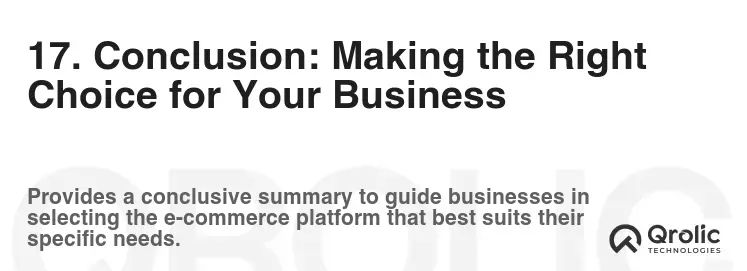
Choosing between PrestaShop and WooCommerce is a critical decision that can significantly impact your online store’s success. Both platforms offer powerful features and customization options, but they cater to different needs and skill levels.
- Choose PrestaShop if: You need a dedicated e-commerce platform with advanced features out of the box, and you have the technical expertise to manage it.
- Choose WooCommerce if: You’re already familiar with WordPress, need content marketing capabilities, and want a flexible and customizable platform with a vast ecosystem of themes and plugins.
Ultimately, the best platform for you depends on your specific business requirements, technical skills, and budget. Carefully consider the factors outlined in this guide, and don’t hesitate to seek professional advice to make the right choice for your business. Remember, a well-chosen platform is the foundation for a thriving online store.
